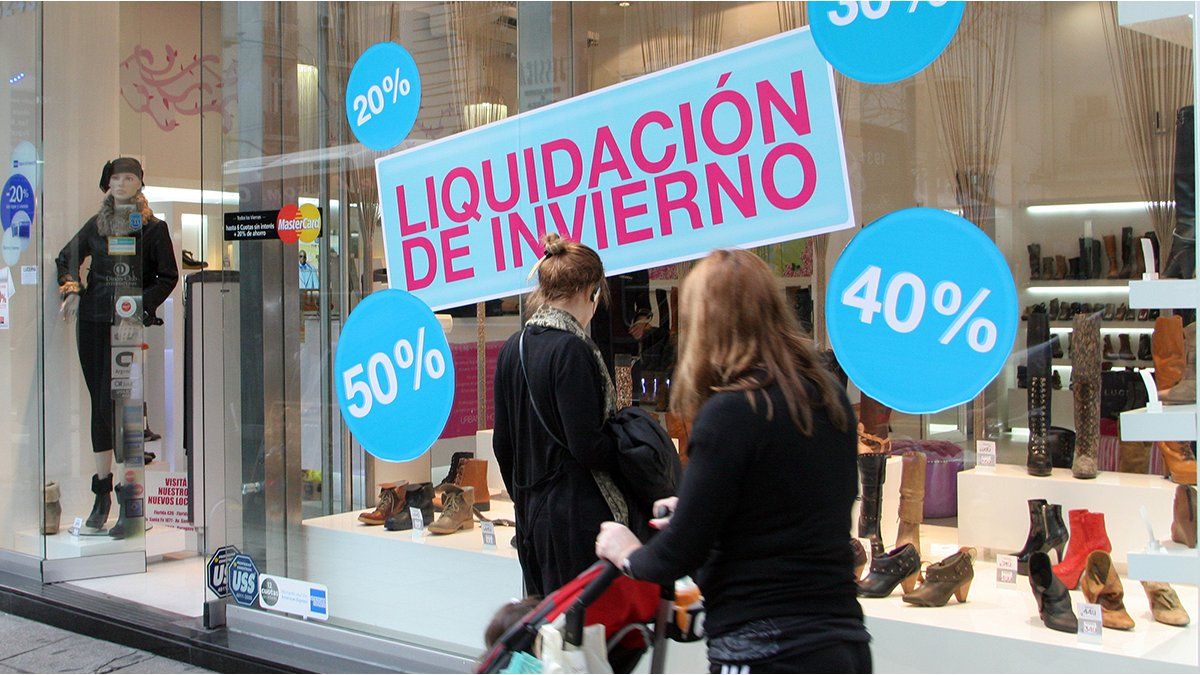For example, according to a study prepared by the Focus Market consultancy, the contracting trend in consumption was maintained in July and accelerated in the first eleven days of August. In the first seven months of the year, the report highlighted, “leaves a contraction of 6.1%”.
“Consumption has been dragging drop in recent months. In August, both the devaluation of the official wholesale exchange rate, which in the first eleven days ran at a monthly rate of 16%, the incorporation of taxes for the importation of goods and services, the devaluation of this week of 22% and the evolution of the price of the dollar in parallel, is leading to strong price increases of up to 25%”, explained Damián Di Pace, director of the firm.
Meanwhile, when analyzing by region, it is observed that in the interior of the country mass consumption accumulated a decline of 5.6%, while in the Metropolitan area it was 7.6%. “All product families go backwards. Food, Personal Care and Cleaning are the ones with the greatest decline in consumption in the accumulated year. Beverages, on the other hand, is the one that presents the least drop, recovering weight in the channel’s billing, ”he explained.
High inflation is, logically, one of the factors putting pressure on consumption. “The prices of the economy are adjusting rapidly after the devaluation of the peso against the dollar during this week. In turn, the price agreements expired last Monday, beginning a new stage of agreements that advanced between mass consumption suppliers, large supermarket chains, the director of Customs and the Secretary of Commerce, in exchange for enabling access to the single market. and free of changes to import and obtain tax benefits,” explained Di Pace.
Other sectoral surveys also report a certain retraction in consumption so far this year. By case, according to the CAMESME retail sales fell for the seventh consecutive month in July“by being located 3.6% below the same month of 2022, in the measurement at constant prices.” “In the first seven months of the year, trade accumulates a fall of 1.6%. Also in the monthly comparison, 3.2% less was sold than in June”, they detailed from the entity.
Settlements Offers Consumption Commerce
The sharp rise in prices impacted consumption in recent months
Mario Fly | Financial sphere
While, the Consumption Indicator of the Argentine Chamber of Commerce and Services (CAC) showed a decline of 2% in the interannual comparison in June, which represents a slight seasonally adjusted contraction compared to the month of May (that is, discounting the usual seasonal effects of consumption throughout the year) of 0.5%. In any case, according to the CAC index, in the accumulated, the first semester presented a growth of 2.4% compared to the same period of 2022.
Outlook for the coming months
The acceleration of inflation forecast for August and the coming months, as a result of the devaluation, will be an obstacle to the recovery of domestic demand. “The fact that inflation is accelerating will hit consumption. This leads to a general impoverishment of the people and especially of those who have less to spend, less income. If you are poorer, you can buy less, ”he explained to Ambit Aldo AbramExecutive Director of the Liberty and Progress Foundation.
“We are seeing the loss of purchasing power of our currency partly because people are fleeing the peso and another part because the Central Bank is issuing a lot. There is also a part that has to do with the flight of Argentine savings, which become dollars and those currencies go under the mattress. But that means that domestic demand is being underfunded, with which consumption and investment fall,” added the economist.
And, regarding what may happen in this regard in the future, he pointed out that “it will continue to push forward, because the capital flight factor, which underfunds the economy, will continue as long as uncertainty remains high ”.
“I think that what we have been seeing as a recession is going to deepen, until some calm arises, which can be given by the presidential candidates, among other things. As well as the electoral results. The key is how much more risk perception we are going to have: the higher the risk perception, the less we consume, the more we save and transform that into dollars. Therefore, the internal demand shrinks more”, concluded Abram.
Source: Ambito




